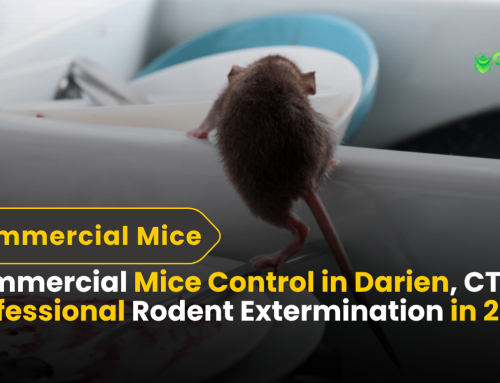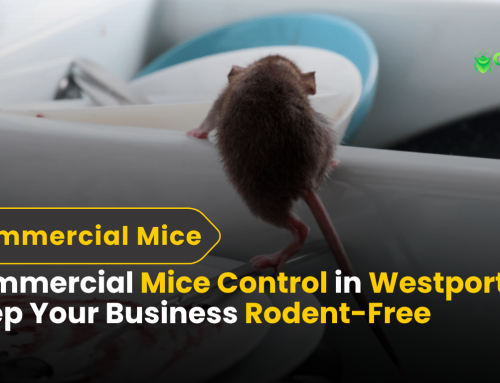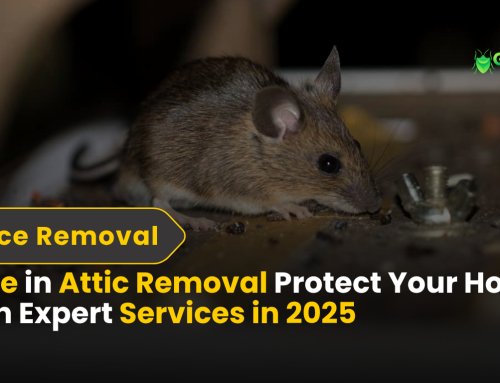How to Get Rid of Ground Hornets Yourself | 2025 Guide & Warnings
Ground hornets are not only a nuisance but a real safety concern for homeowners. Their stings can be painful, dangerous, or even life-threatening for people allergic to them. They often build nests underground in yards, gardens, or lawns, making them easy to miss until activity becomes noticeable.
If you’re dealing with a hornet problem, you’re probably asking: “How can I get rid of ground hornet myself safely?” The answer lies in accurate identification, proper safety measures, effective removal methods, and preventive strategies. In this guide, we’ll cover everything from spotting a nest to ensuring it never comes back, so you can take control of your yard without putting yourself at risk.
Why You Need to Get Rid of Ground Hornet Quickly
Ground hornets are aggressive insects with powerful stings. Unlike typical wasps, ground hornets may attack repeatedly if they feel threatened. Knowing how to get rid of ground hornet safely is essential for protecting yourself, your family, and your pets.
-
Stings can cause severe allergic reactions in sensitive individuals.
-
Ground hornets often nest near high-traffic areas, such as gardens, playgrounds, or paths.
-
They can threaten pets, especially dogs or cats, who may unknowingly disturb a nest.
According to the USDA pest management guidelines, hornets can pose significant safety risks and should be managed carefully, especially in residential areas.
Identifying Ground Hornets and Their Nests
Proper identification is the first step before you get rid of ground hornet nests. Ground hornets are often mistaken for other stinging insects like wasps or yellow jackets. Understanding their unique behaviors and nest types is essential.
Signs of a ground hornet nest:
-
Circular hole in the soil: Typically 1–2 inches wide, sometimes surrounded by loose soil or dirt mounds.
-
Visible hornet activity: Hornets fly in and out of the nest, particularly in late afternoon when foraging.
-
Nest location: Often in sunny, dry, or sandy soil under shrubs, lawns, or debris.
-
Hornet size and color: Ground hornets are usually larger than common wasps, with distinctive yellow and black markings.
Different species may have slightly different nesting habits. Some may prefer sandy soil, while others use compacted earth near building foundations. Knowing the species can guide the best strategy to get rid of ground hornet infestations.
Safety Precautions Before Removal
Before you get rid of ground hornet nests, safety must be your top priority. Ground hornets are aggressive defenders of their nests, and even a single sting can be painful or dangerous.
Protective Gear Recommendations:
-
Long sleeves, pants, and thick gloves
-
Boots and a hat with a full protective veil
-
Optional: face shield for extra protection
-
Insect repellent for exposed areas
Timing & Technique:
-
Nighttime removal is safest because hornets are less active.
-
Avoid sunny or windy days to prevent unexpected attacks.
-
Keep children and pets indoors.
Emergency Measures:
-
Have a first-aid kit ready, including antihistamines or an epinephrine injector for allergic reactions.
-
Know the location of the nearest medical facility in case of severe stings.
Spray from a safe distance (6–8 feet) and never lean directly over the nest. This reduces the chance of multiple stings while maximizing the effectiveness of your attempt to get rid of ground hornet nests.
Tools and Products You’ll Need to Get Rid of Ground Hornet
Having the right tools is critical for safe and effective DIY hornet removal. Here’s a quick list:
| Tool/Product | Purpose | Notes |
|---|---|---|
| Insecticide spray | Kill hornets instantly | Use products labeled for ground hornets/wasps |
| Dust powder / diatomaceous earth | Penetrates nest and kills gradually | Safe for pets if applied carefully |
| Soap & water mixture | Non-toxic alternative | Effective for small nests |
| Protective clothing | Safety from stings | Thick gloves, boots, veil, long sleeves |
| Flashlight | Nighttime removal | Use red light to reduce hornet activity |
| Garden shovel | Cover or fill old nests | Optional for prevention |
DIY Methods to Get Rid of Ground Hornet Yourself
There are multiple methods for removing hornets. Each method has pros, cons, and safety considerations.
Insecticide Spray
-
Spray directly into the nest entrance at night.
-
Wait 24 hours before approaching to ensure all hornets are eliminated.
-
Pros: Fast, effective for medium-to-large nests.
-
Cons: Chemical exposure; always follow label instructions.
Dust Powder
-
Pour diatomaceous earth or commercial powder at the nest entrance.
-
Hornets carry the powder into the nest, killing them gradually.
-
Pros: Long-lasting, safe if applied correctly.
-
Cons: Slower action; may require repeated application.
Soap & Water Solution
-
Mix 2–3 tablespoons of dish soap in a liter of water.
-
Pour carefully into the nest at night.
-
Pros: Non-toxic, uses household ingredients.
-
Cons: Less effective for large nests; may need multiple treatments.
Boiling Water Method
-
Pour slowly into the nest opening at night.
-
Pros: Immediate impact for small nests.
-
Cons: Dangerous if soil or plants are disturbed; risk of splash injuries.
Step-by-Step DIY Example:
-
Identify the nest and measure distance from your yard path.
-
Wear full protective gear.
-
Apply insecticide or dust powder at night.
-
Wait 24 hours, monitoring activity.
-
Carefully remove the nest if inactive.
-
Seal the entrance with soil or sand.
-
Observe the area for one week to ensure no hornets return.
A homeowner in Texas used a dust powder method on a large nest. They applied at night, waited 48 hours, and repeated once. The hornets were eliminated with zero stings, proving that timing and safety measures are crucial when you get rid of ground hornet nests.
Preventing Future Ground Hornet Infestations
Once the nest is removed, prevention is the key to long-term safety. The best way to get rid of ground hornet problems permanently is to remove what attracts them.
Preventive Tips:
-
Fill old burrows with soil or sand.
-
Keep lawns trimmed and remove piles of leaves or debris.
-
Secure garbage bins and remove fallen fruit.
-
Use natural repellents like peppermint oil, garlic sprays, or vinegar mixtures.
Seasonal Advice:
-
Spring & Summer: Inspect for early nest activity.
-
Fall: Remove old nests and seal potential entry points.
Checklist for Prevention:
-
Inspect yard monthly for new nests.
-
Seal holes or gaps in soil.
-
Educate family members about hornet safety.
-
Store food and garbage properly.
-
Use natural repellents near common nesting spots.
FAQs About Get Rid of Ground Hornet
Q1: Will hornets return after nest removal?
Yes, hornets may attempt to recolonize if the environment remains favorable. Sealing burrows and using repellents reduces the chance.
Q2: Can I remove a nest during the day?
It’s not recommended. Hornets are most aggressive during daylight hours. Nighttime removal is safer.
Q3: Is it safe to remove nests near pets?
Yes, if pets are kept indoors and proper safety measures are followed. Do not allow pets to approach the nest during or after treatment.
Q4: How do I choose the best insecticide to get rid of ground hornet?
Look for products labeled for ground hornets or wasps. Follow manufacturer instructions and prioritize safer, low-toxicity options.
Q5: Can multiple methods be combined?
Yes, combining dust powder with insecticide or soap solutions can increase effectiveness, especially for stubborn or large nests.
Q6: Are hornets attracted to certain plants?
Sweet-smelling flowers, fallen fruit, or sugary residues may attract hornets. Keep these areas clean to minimize visits.
Q7: What if I’m allergic to hornet stings?
Do not attempt DIY removal. Call a professional pest control service immediately to avoid life-threatening reactions.
Conclusion: Get Rid of Ground Hornet Safely Today
Understanding how to get rid of ground hornet yourself empowers you to protect your family, pets, and property. By following safety precautions, using the right DIY methods, and implementing preventive measures, you can manage hornet problems effectively.
Remember, timing, protective gear, and proper products are critical for success. If your nest is large, near children or pets, or you’re allergic to stings, professional intervention is the safest choice.
Take control now! Protect your yard and family by acting today, or contact us for professional, safe, and reliable hornet removal services. Don’t wait until stings or injuries occur—your safety is worth it.










